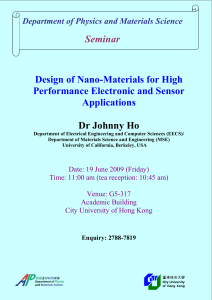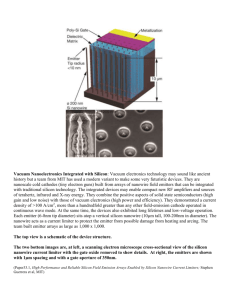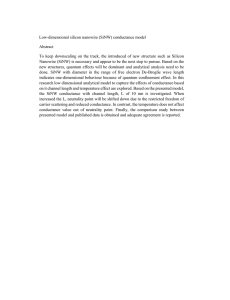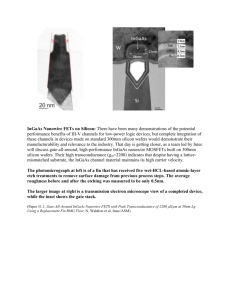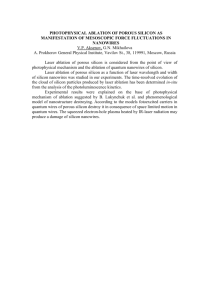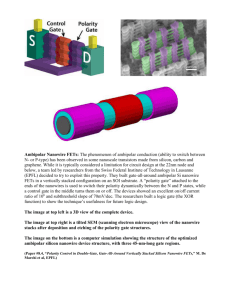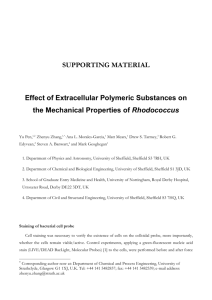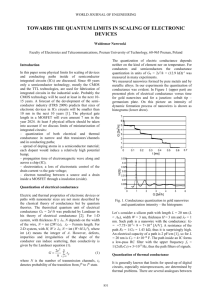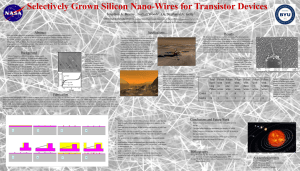Effects of Localized Surface Charge on Silicon Nanowire
advertisement
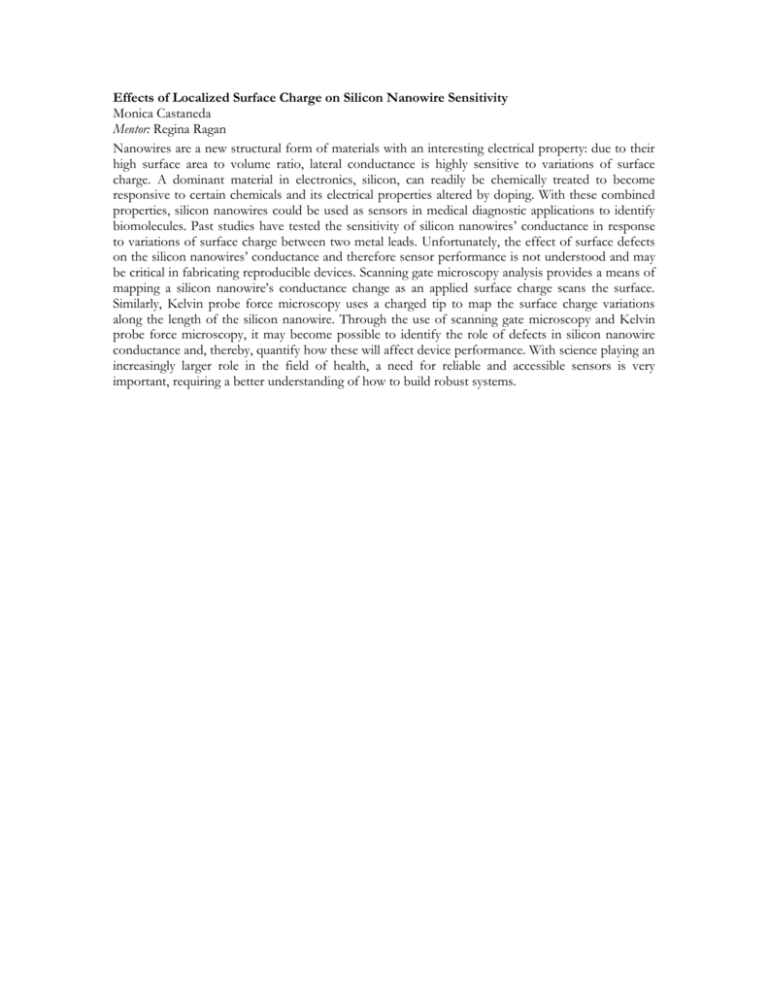
Effects of Localized Surface Charge on Silicon Nanowire Sensitivity Monica Castaneda Mentor: Regina Ragan Nanowires are a new structural form of materials with an interesting electrical property: due to their high surface area to volume ratio, lateral conductance is highly sensitive to variations of surface charge. A dominant material in electronics, silicon, can readily be chemically treated to become responsive to certain chemicals and its electrical properties altered by doping. With these combined properties, silicon nanowires could be used as sensors in medical diagnostic applications to identify biomolecules. Past studies have tested the sensitivity of silicon nanowires’ conductance in response to variations of surface charge between two metal leads. Unfortunately, the effect of surface defects on the silicon nanowires’ conductance and therefore sensor performance is not understood and may be critical in fabricating reproducible devices. Scanning gate microscopy analysis provides a means of mapping a silicon nanowire’s conductance change as an applied surface charge scans the surface. Similarly, Kelvin probe force microscopy uses a charged tip to map the surface charge variations along the length of the silicon nanowire. Through the use of scanning gate microscopy and Kelvin probe force microscopy, it may become possible to identify the role of defects in silicon nanowire conductance and, thereby, quantify how these will affect device performance. With science playing an increasingly larger role in the field of health, a need for reliable and accessible sensors is very important, requiring a better understanding of how to build robust systems.
